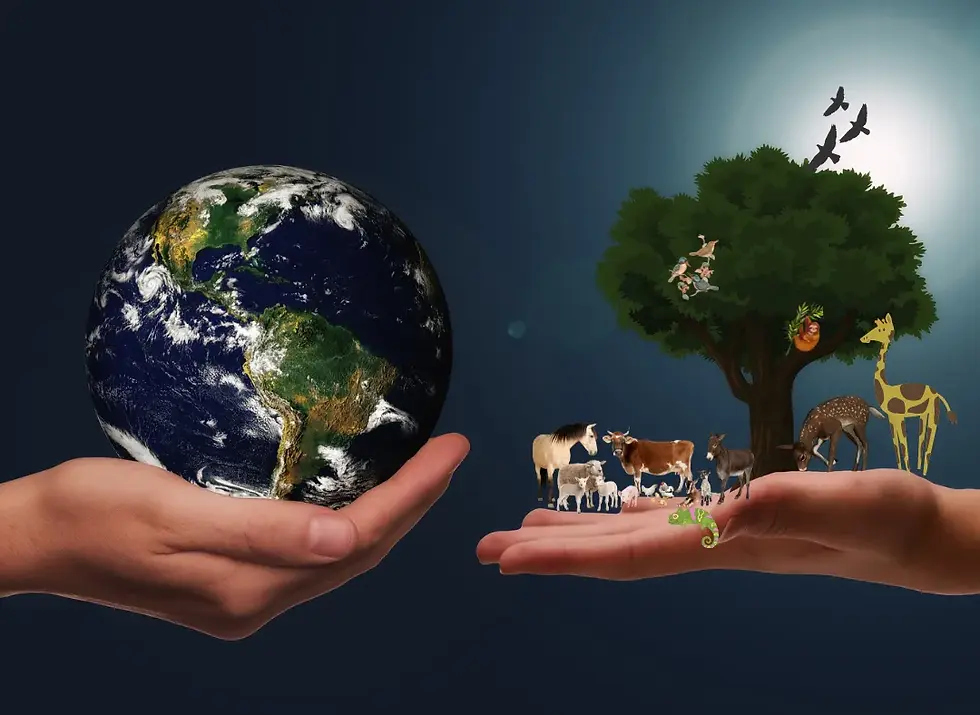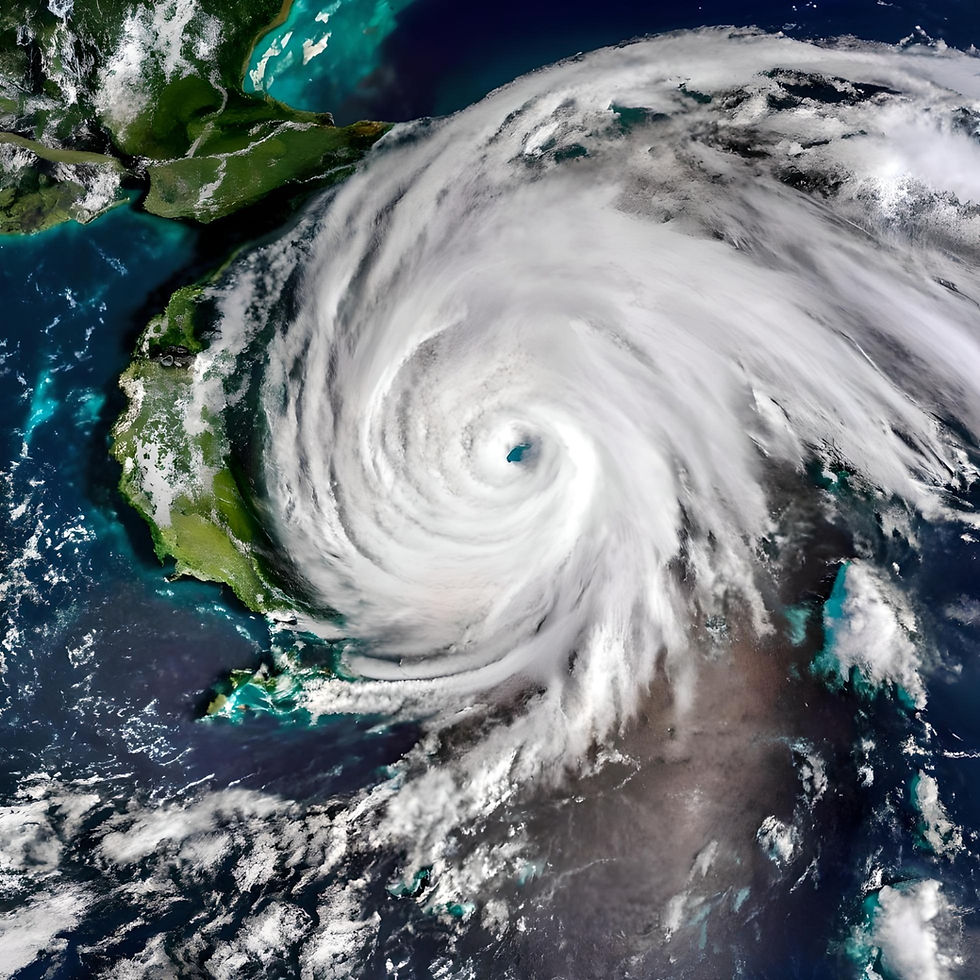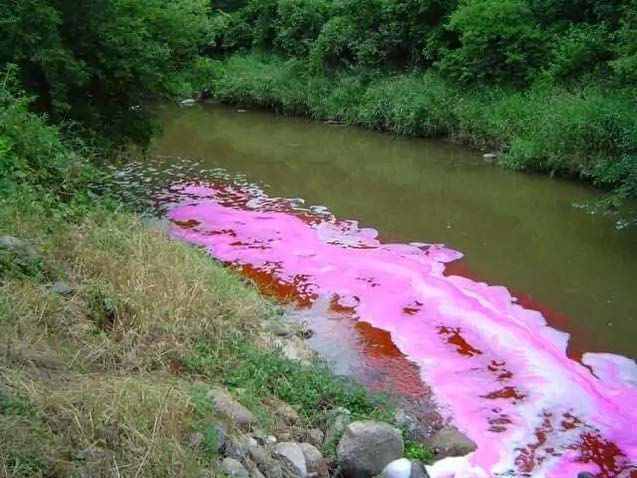Trophic Rewilding: Rethinking Natural Climate Solutions
- Rituraj Phukan
- May 22, 2023
- 3 min read
Co-creating values of co-existence is the first step towards preserving biodiversity.

Image Source: Pixabay and Canva for graphics
The Paris Agreement’s goal of limiting warming to 1.5 C focuses on reaching net-zero CO2 emissions by transitioning to renewable energy generation by 2050 and stopping deforestation and land conversion to prevent the emissions of carbon already stored in ecosystems. However, even if fully implemented, current commitments will still take us beyond a catastrophic 2 degrees above pre-industrial levels. Besides, more measures are required, including ‘negative emissions’ solutions that remove and store up to 500 Gt of atmospheric CO2 by the turn of the century, to negate the heat-trapping potential of the already extant CO2 in the atmosphere.
In this context, one recent paper “Trophic rewilding can expand natural climate solutions” presents scientific evidence to show that protecting and restoring wild animals and their functional roles can enhance natural carbon capture and storage. The researchers called for new thinking that includes restoring and conserving wild animals and their ecosystem roles as key components of natural climate solutions.
The paper asserts that while natural climate solutions can arrest climate change by protecting and enhancing carbon capture and storage in plants, soils, and sediments in ecosystems, while also protecting habitats and landscapes to conserve the diversity of wildlife species, we must now pay attention to the role animals play in controlling the carbon cycle. Wild animals, especially terrestrial and marine mammals, and marine fish, also have consequential effects with a diversity of functional roles in the ecosystem.
The authors explain that using wild animal conservation explicitly to enhance carbon capture and storage is known as ‘animating the carbon cycle’ and requires the creation of dynamic landscapes. Protecting and restoring the ability of animal species to reach ecologically meaningful densities so that as they move and interact with each other and fulfill their functional roles in ecosystems is known as trophic rewilding.

Image Courtesy: Author
The current focus of trophic rewilding on larger-bodied wild vertebrates like whales, elephants, bison, tiger, wolves, etc., is because of their larger ecological effects, sensitivity to human exploitation, habitat loss, etc., and because rewilding these require challenging interventions compared to restoring plant biomass and diversity. The authors see a huge scope for expansion of natural climate solutions and rewilding, as wild animal species occur in all ecosystems, and the variety of locally relevant, community-led initiatives, depending on the prevalence of diverse species in different regions.
The authors also underlined the need to consider the complexities associated with trophic rewilding because some species’ impacts may vary across ecosystems. Another concern is that trophic rewilding of large herbivores will increase methane release unless it occurs with measured reductions in domestic livestock. There is an urgency for further research, policy changes, and implementation because we are losing populations of many animal species just as we are discovering how much they functionally impact carbon capture and storage.

Image Source: Canva
Trophic rewilding solutions represent the convergence of action to meet the goals of the Paris Agreement, the Global Biodiversity Framework, and the Sustainable Development Goals. Deploying natural climate solution-based projects is more likely to create an opportunity to address regional inequalities. The return of the great mammals to their historic populations will have trophic cascading impacts and ensure long-term planetary health and human wellbeing.
About the Author:
Rituraj Phukan is an environmental writer, adventurer & naturalist based out of Assam. He serves as the National Coordinator for Biodiversity, Climate Reality India and is a member of the IUCN.










SUDIRMAN168
SUDIRMAN168
SUDIRMAN168
SUDIRMAN168DAFTAR
SUDIRMAN168LOGIN
SUDIRMAN168ALTERNATIF
SUDIRMAN168TERPERCAYA
SUDIRMAN168MAXWIN
SITUSPILIHANSUDIRMAN168&LAPAKBET777
LAPAKBET777
LAPAKBET777RESMI
LAPAKBET777GACOR
LAPAKBET777DAFTAR
LAPAKBET777LOGIN
LAPAKBET777ALTERNATIF
LAPAKBET777MAXWIN
TERMINAL4D
Daftar Link Dofollow
lapak7d
lapak7d
lapak7d
lapak7d
lapak7d
lapak7d
lapak7d
lapak7d
lapak7d
lapak7d
lapak7d
lapak7d
lapak7d
situs slot demo
slot demo X1000
scatter hitam
slot toto
situs slot online
situs slot online
situs slot online
situs slot
situs slot
situs slot
situs slot
sudirman168
sudirman168
sudirman168
slot gacor
toto singapure
situs toto 4d
toto slot 4d
pg soft mahjong2
mahjong2
pocari4d
pocari4d
pocari4d
pocari4d
pocari4d
pocari4d
pocari4d
terminalbet
terminalbet
data pemilu
utb bandung
universitas lampung
slot bonus new member
ksr88
ksr88
ksr88
ksr88
Slot Dana
situs slot gacor hari ini
terminal4d
terminal4d
terminal4